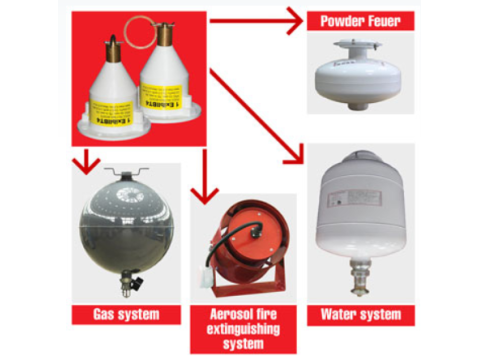Autonomous Fire Suppression: Overview and Key Differences
Autonomous fire suppression systems are often confused with automatic ones. However, understanding the difference is crucial for selecting the right solution for fire safety. While automatic fire suppression systems (AFSS) require external power and control systems, autonomous systems operate independently, making them ideal for locations without reliable power or supervision.
How Do Autonomous Fire Suppression Systems Work?
An autonomous fire suppression system is a standalone module equipped with a fire-extinguishing agent and control mechanisms. These systems detect and suppress fire without requiring external commands. Common elements include:
- Detection Devices: Specialized sensors capable of self-generating electric charges or powered by internal batteries.
- Activation Systems: Trigger mechanisms using mechanical, chemical, or electrical methods, such as heat-sensitive materials, pyrotechnic charges, or solenoids.
- Suppression Modules: Compact units combining storage, generation, and release of extinguishing agents like gases, powders, or aerosols.
Advantages of Autonomous Systems
- Energy Independence: Operates without external power sources, ideal for remote or unmanned facilities.
- Cost-Effective: Affordable installation and maintenance with scalable configurations.
- Versatility: Suitable for different fire hazards and environments, from server rooms to warehouses.
- Wide Range of Models: Options based on extinguishing agents and capacities ensure compatibility with various safety requirements.
Limitations of Autonomous Fire Suppression Systems
- Delayed Activation: Activation depends on reaching critical temperatures, potentially allowing fire to spread. Adding smoke detectors can enhance response times.
- No Notification System: Absence of alarms can be risky in gas-based systems, requiring manual inspection after activation.
- Lack of Centralized Monitoring: Regular manual checks are needed to ensure functionality, especially for gas-based modules.
Applications of Autonomous Fire Suppression Systems
These systems are highly effective in smaller, confined spaces such as:
- Server rooms and data centers
- Warehouses
- Technical basements and cable ducts
- Compact commercial spaces like cafes or stores
Their modular design makes them an excellent alternative to handheld fire extinguishers in small-scale commercial environments.
Types of Extinguishing Agents
- Powder-Based Systems: Effective for Class A, B, C, and E fires, including electrical fires up to 1,000 volts. However, they may damage sensitive electronics and require thorough cleaning after use.
- Gas-Based Systems: Suitable for enclosed spaces like libraries and museums, leaving no residue and protecting valuable assets.
- Aerosol Systems: Ideal for all fires except smoldering and metal hydrides. These systems excel in environments without personnel.
Conclusion
Autonomous fire suppression systems are an effective first line of defense in fire safety. However, for optimal protection, they should complement centralized systems and be professionally installed. Ensure the configuration and placement of modules meet your specific fire safety needs.

